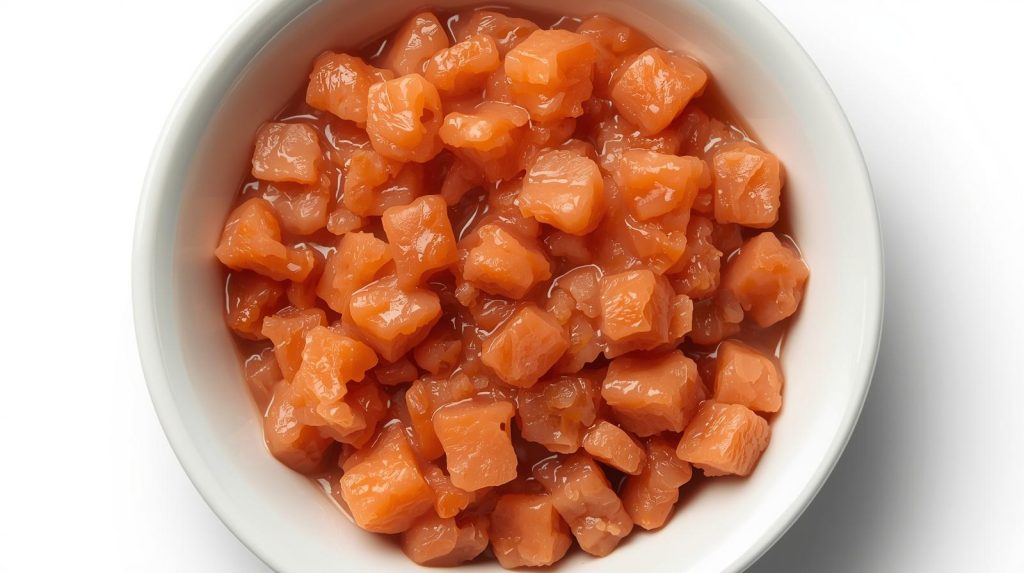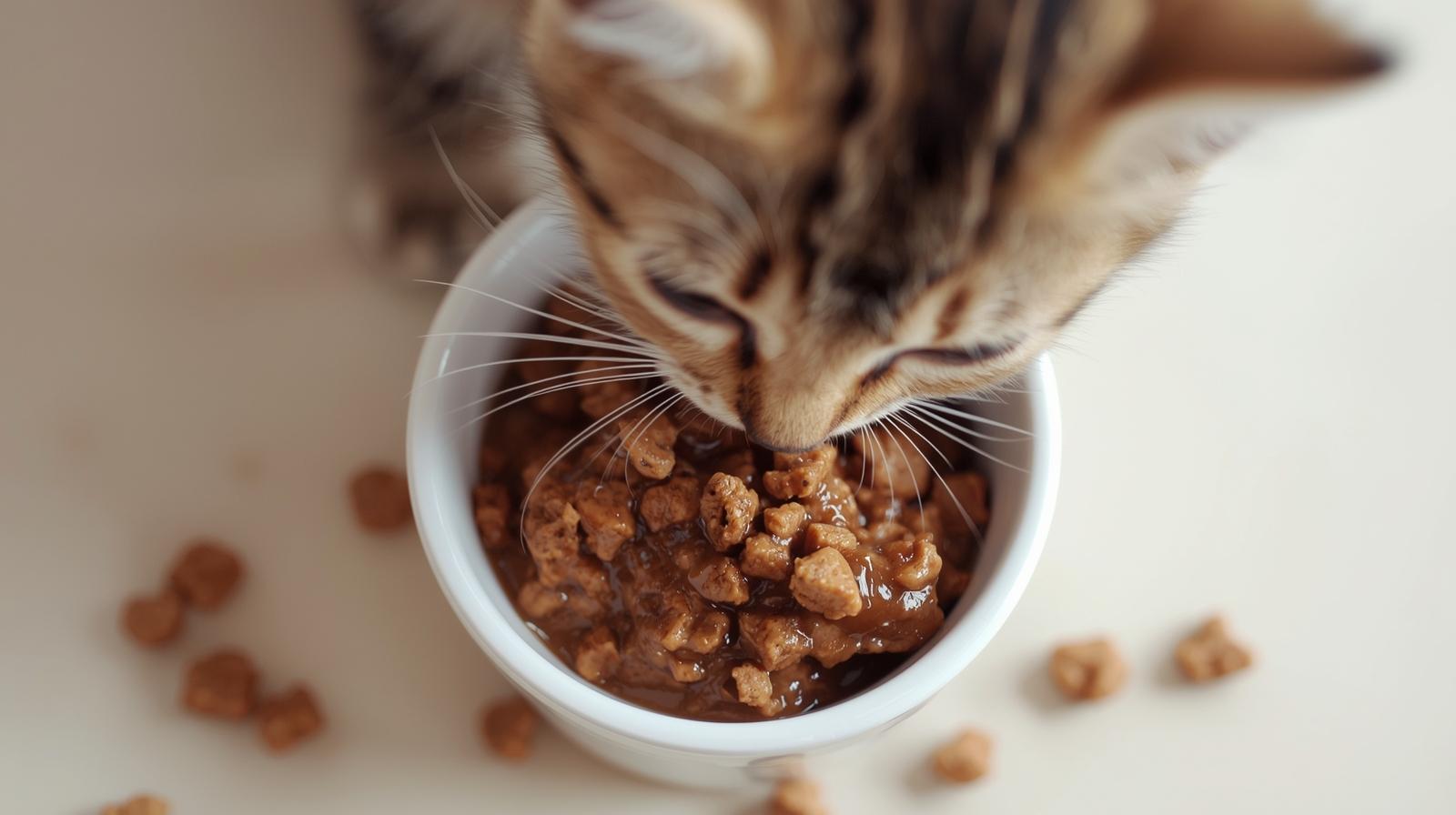When you bring a kitten home, it’s like getting a bundle of love, curiosity, and sunshine wrapped in fur. But behind that cute face is a growing body that needs the right food to grow and thrive. Giving your kitten the right food during its first year will set the stage for a lifetime of good health, energy, and happiness.
That can help with that. Wet food made just for kittens can help. It is not like regular cat food; it is made just for young cats and has a mix of protein, fat, and water to help them grow up healthy. This in-depth guide will cover everything you need to know about kitten wet food, including why it’s important, its benefits, how to choose the best brand, feeding schedules, and brands that experts recommend.
The Benefits of Wet Food for Kittens
Kittens grow quickly in both body and mind during their first year of life. Their organs, muscles, and bones grow stronger, which means they need more of a certain nutrient than adult cats do. Kitten wet food has these nutrients in a form that is easy for them to absorb and has a lot of water.
This is why it’s so important:
Encourages Quick Growth: Kittens can gain two or three times their weight in just a few weeks. Wet food, which is high in protein and healthy fats, helps this fast growth by building lean muscle and strong bones.
Making sure they drink enough water is easy: many cats naturally drink less. Wet food makes up for it by giving kittens up to 80% moisture, which keeps them hydrated and lowers their risk of getting kidney and urinary problems later in life.
Kittens need soft, easy-to-chew foods because their teeth are small and their stomachs are sensitive. Wet food is easier for them to eat and better for their stomach than dry kibble.
Encourages Healthy Eating Habits: Wet food’s texture and smell attract picky eaters, making sure they get the nutrients they need. This helps kids learn how to eat well at a young age.
DHA, taurine, and important vitamins found in kitten-specific wet food boost immunity and help the brain and eyes grow, which is important for kittens who are always exploring their surroundings.
In short, wet food for kittens is more than just a meal; it’s an important part of their health, growth, and overall well-being.
The Importance of Wet Food for Kittens
Kittens are not just small cats; they are growing animals that need special care. Adult cat food is meant to keep cats healthy, not help them grow, so giving it to them can lead to vitamin deficiencies. Wet food made just for cats has more healthy fats, proteins, and calories to provide them with the energy they need.
The soft texture also makes it easier to eat and digest, and the moisture keeps their little kidneys healthy. Your cat needs all the nutrients it needs to grow and be healthy in every meal.
Nutrients that are good for kittens in wet food
If you know which nutrients are most important, you can be sure to pick the right product.
Better Protein
Protein is what makes growth possible. Check to see if the first ingredient is real meat, like beef, fish, turkey, or chicken. Kittens need 30 to 40 percent protein in their food to grow strong muscles and have lots of energy to play.
Healthy Fats
Omega-3 and omega-6 fatty acids are important for the growth of the brain and eyes. DHA, which is found in foods like chicken or fish fat, helps your kitten’s brain work better and keeps its coat smooth and shiny.
Vitamins and minerals
A healthy diet includes the following:
- Calcium and phosphorus make teeth and bones strong.
- Taurine is good for your heart and eyes.
- Vitamins A, C, and E are good for your eyesight and your immune system.
- Copper and zinc are good for your skin and fur.
Water and moisture
Wet food makes sure that kittens get enough water, which is good for their kidneys and urinary system, because they might not drink enough water.
Wet vs. Dry Food for Kittens
A lot of cat owners wonder whether to feed their cats wet or dry food. Damp food is usually better for young kittens, but both might be important.
People want to eat food that is wet because it has more moisture, is easier to digest, and smells stronger. It looks like the natural food that wild cats eat, which is high in protein and moisture. Dry food is easy to use, but it is dehydrated and can be too hard on baby teeth.
You can slowly give your kitten dry food as they get older to help their teeth and gums stay healthy. However, for the first six months, kitten-specific wet food should be their main source of nutrition.
How to Choose the Best Wet Food for Your Kitten
When you look through the aisles of a pet store or an online store, it’s easy to feel overwhelmed by all the options. Here are some things to think about when making a choice:
Check to make sure the label is good
If the food says “complete and balanced for kittens,” it meets AAFCO standards. The first ingredient should always be real meat, not byproducts. Please stay away from things that have soy or corn fillers, fake colors, or preservatives in them.
Choose brands you can trust
Pick companies that have done scientific research and made formulas that veterinarians have approved. Some of the best are:
- Royal Canin Mother & Babycat Ultra Soft Mousse is a soft mousse that is high in DHA and great for kittens who are just starting to eat solid food.
- The Purina Pro Plan Development Chicken & Liver Entrée has probiotics that help with digestion and muscle strength.
- The Wellness CORE Grain-Free Kitten Formula is high in protein, low in grains, and full of antioxidants.
- The Kitten Chicken Entrée is a Hill Vet-recommended and balanced Science Diet that is good for bones and the immune system.
- The Blue Buffalo Healthy Gourmet Kitten Chicken entrée puts real meat ahead of fake additives.

Make sure the food is right for the age and stage of growth
Give the animal kitten food until it is at least 12 months old. Larger breeds may need it for longer to help their bones grow properly.
Be aware of allergies and sensitivities
If your kitten has diarrhea, skin irritation, or is scratching too much, they may be sensitive to certain chemicals. In these cases, pick a wet food formula that has only one protein or no grains.
A Guide to Controlling Portions and Setting a Feeding Schedule
Making a feeding schedule for your kitten helps you control their growth and digestion.
6 to 12 weeks: Give them four small meals a day because they use up energy quickly.
3–6 months: You only need to eat three times a day.
Change to two meals a day, with small snacks if you need them, between six and twelve months.
Follow the feeding instructions on the package of food you choose, and change the serving sizes based on how active your kitten is.
- Don’t serve wet food that is too hot or cold; instead, serve it at room temperature.
- If your cat doesn’t finish a meal, put the leftovers in the fridge and eat them within 24 hours.
- Changing to wet food made just for kittens
- If your cat has been eating something else, slowly introduce the new food to avoid upset stomachs. Over the course of seven days, add more and more of the new meal to the old one.
Here is an example of a good transition schedule:
- 75% old food and 25% new food on days 1–2
- Days three and four: half old food and half new food
- Days 5–6: Old food makes up 25% of the meal, and new food makes up 75%.
- Day 7: only wet food made for kittens
- This slow change makes it easier for your kitten’s digestive system to adjust.
Common Mistakes to Avoid When Feeding Kittens
Even the most dedicated pet owners can make mistakes when it comes to feeding. To keep your kitten healthy, don’t give them these:
- Food for adults that is fed too soon doesn’t have enough nutrients for growth.
- Overfeeding: Leads to obesity and problems with digestion.
- Not paying attention to hydration: Always give clean water, even if the food is wet.
- Sudden changes in food can make you throw up and have diarrhea.
- If you only eat dry food, you are more likely to have urinary problems and become dehydrated.
- Balance and consistency are very important; small meals that are high in nutrients have a big effect.
FAQs About Wet Food for Kittens
1. What makes wet food for kittens better than regular cat food?
Wet food for kittens has more protein, fat, and DHA and is made to help them grow. Regular cat food, which is made for maintenance, doesn’t meet the needs of growing kittens.
2. When should I start feeding my kitten wet food?
Start giving kittens wet food when they are three to four weeks old and are starting to stop drinking their mothers’ milk. Start with pâté-style wet food or soft mousse to make it easier to chew.
3. How long should kittens eat wet food?
Most kittens should eat kitten-specific food until they are 12 months old. Larger breeds should eat it until they are 15 months old.
4. Is it okay to feed my cat both dry and wet food?
Yes! Putting the two together can make your teeth healthier and change how they feel. Make sure both are kitten formulas for the best nutrition.
5. What do I do if my cat doesn’t want to eat wet food?
You could try adding a spoonful of tuna water or slowly heating the food to let the smell out. Kittens often accept wet food after being exposed to it several times, which shows how important it is to keep trying.
Conclusions: give your kitten the best start in life.
Your kitten will grow, learn, and be very curious during its first year. What you eat now will affect your health for many years to come. Kitten-specific wet food is the best way to give your cat the right amount of food, water, and taste.
Choose high-moisture meals, stick to regular feeding times, and choose high-quality meat-based brands. A well-fed kitten will grow up to be a healthy, confident, and loving adult cat.


